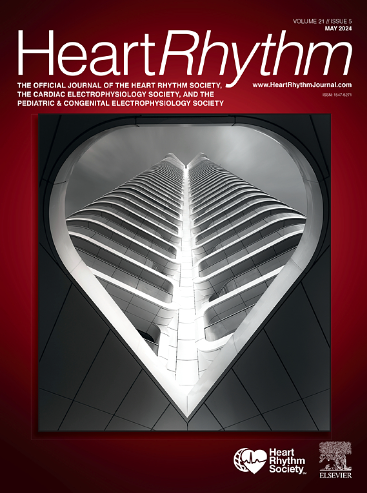Prediction of atrial fibrillation after a stroke event: A systematic review with meta-analysis
IF 5.6
2区 医学
Q1 CARDIAC & CARDIOVASCULAR SYSTEMS
引用次数: 0
Abstract
Background
Detecting atrial fibrillation (AF) after stroke is a key component of secondary prevention, but indiscriminate prolonged cardiac monitoring is costly and burdensome. Multivariable prediction models could be used to inform selection of patients.
Objective
This study aimed to determine the performance of available models for predicting AF after a stroke.
Methods
We searched for studies of multivariable models that were derived, validated, or augmented for prediction of AF in patients with a stroke, using MEDLINE and Embase from inception through September 20, 2024. Discrimination measures for tools with C statistic data from ≥3 cohorts were pooled by bayesian meta-analysis, with heterogeneity assessed through a 95% prediction interval. The risk of bias was assessed with the Prediction model Risk Of Bias Assessment tool (PROBAST).
Results
We included 75 studies with 58 prediction models; 66% had a high risk of bias. Fifteen multivariable models were eligible for meta-analysis. Three models showed excellent discrimination: SAFE (C statistic, 0.856; 95% confidence interval [CI], 0.796–0.916), SURF (0.815; 95% CI, 0.728–0.893), and iPAB (0.888; 95% CI, 0.824–0.957). Excluding high-bias studies, only SAFE showed excellent discrimination (0.856; 95% CI 0.800–0.915). No model showed excellent discrimination when limited to external validation or studies with ≥100 AF events. No clinical impact studies were found.
Conclusion
Three of the 58 identified multivariable prediction models for AF after stroke demonstrated excellent statistical performance on meta-analysis. However, prospective validation is required to understand the effectiveness of these models in clinical practice before they can be recommended for inclusion in clinical guidelines.
中风事件后心房颤动的预测:系统综述与荟萃分析。
背景:卒中后检测心房颤动(AF)是二级预防的关键组成部分,但不加区分的长时间心脏监测既昂贵又繁重。多变量预测模型可用于告知患者选择。目的:确定现有预测脑卒中后房颤模型的性能。方法:我们使用Medline和Embase从开始到2024年9月20日检索了用于预测卒中患者房颤的衍生、验证和/或增强的多变量模型的研究。对来自≥3个队列的c统计量数据的工具进行贝叶斯荟萃分析,并通过95%的预测区间(PI)评估异质性。使用预测模型偏倚风险工具(PROBAST)评估偏倚风险。结果:我们纳入了75项研究和58个预测模型。66%有高偏倚风险。15个多变量模型符合meta分析的条件。SAFE (c-统计量0.856,95% CI 0.796-0.916)、SURF (0.815, 95% CI 0.728-0.893)和iPAB (0.888, 95% CI 0.824-0.957)三个模型具有很好的鉴别能力。排除高偏倚研究,只有SAFE表现出极好的鉴别(0.856,95% CI 0.800-0.915)。当仅限于外部验证或≥100个AF事件的研究时,没有模型显示出良好的辨别能力。未发现临床影响研究。结论:58个确定的卒中后房颤多变量预测模型中有3个在meta分析中表现出优异的统计性能。然而,在推荐纳入临床指南之前,需要进行前瞻性验证以了解这些模型在临床实践中的有效性。
本文章由计算机程序翻译,如有差异,请以英文原文为准。
求助全文
约1分钟内获得全文
求助全文
来源期刊

Heart rhythm
医学-心血管系统
CiteScore
10.50
自引率
5.50%
发文量
1465
审稿时长
24 days
期刊介绍:
HeartRhythm, the official Journal of the Heart Rhythm Society and the Cardiac Electrophysiology Society, is a unique journal for fundamental discovery and clinical applicability.
HeartRhythm integrates the entire cardiac electrophysiology (EP) community from basic and clinical academic researchers, private practitioners, engineers, allied professionals, industry, and trainees, all of whom are vital and interdependent members of our EP community.
The Heart Rhythm Society is the international leader in science, education, and advocacy for cardiac arrhythmia professionals and patients, and the primary information resource on heart rhythm disorders. Its mission is to improve the care of patients by promoting research, education, and optimal health care policies and standards.
 求助内容:
求助内容: 应助结果提醒方式:
应助结果提醒方式:


